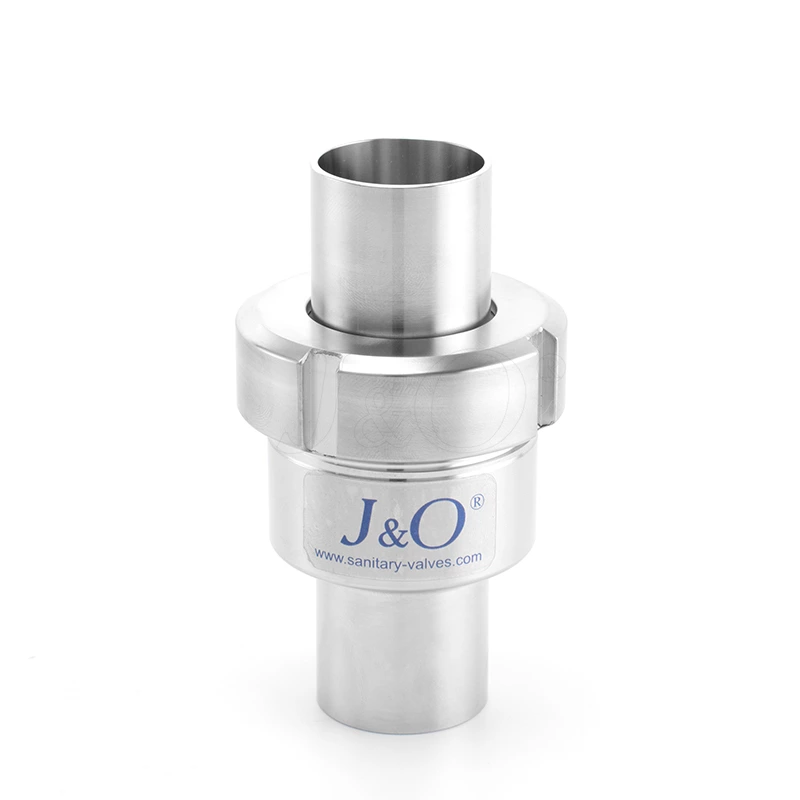What Types Of Sanitary Check Valves Are There?
A Sanitary Check Valve is a valve used to prevent backflow of media. Its function is to allow fluid to flow freely in one direction but block it in the other. Check valves are typically installed at the outlet of a piping system to ensure the correct and safe flow of media. Based on their structure and operating principle, check valves can be divided into the following types:
1. Lift Check Valve: A lift check valve opens and closes based on the pressure differential of the media flowing. When the media flows from downstream to upstream, the valve core is pushed up by the media pressure, opening the valve. When the media flows from upstream to downstream, the valve core is closed by its own weight and the valve spring force. Lift check valves are primarily suitable for small and medium-sized piping systems.
2. Swing Check Valve: A swing check valve has a plate-like valve core connected to the valve body by a hinge. When the media flows from downstream to upstream, the valve core is pushed upward by the media, allowing the media to flow freely. When the medium flows from upstream to downstream, the valve core is affected by its own weight and the reverse flow of the liquid. Swing check valves are suitable for small and medium-sized piping systems, especially under conditions of low flow rates and high pressures, and offer better sealing performance than poppet check valves.
3. Tilting Disc Check Valve: The valve core of a tilting disc-shaped check valve is a tiltable disc. When the medium flows from downstream to upstream, the pressure of the medium pushes the valve core to one side, opening the valve and allowing the medium to flow freely. When the medium flows from upstream to downstream, the valve core is affected by its own weight and the force of the reverse flow of the liquid, closing the valve. Tilting check valves are suitable for piping systems with high flow rates and high pressures, offering excellent sealing performance and stability.
4. Ball Check Valve: The valve core of a ball check valve is a spherical structure secured within the valve by a spring. When the medium flows from downstream to upstream, the pressure of the medium pushes the valve core upward, opening the valve and allowing the medium to flow freely. When the medium flows from upstream to downstream, the valve core is closed by its own weight and the force of the reverse flow. Ball check valves are suitable for small-diameter piping systems and offer advantages such as high flow rates and flexible opening and closing.
5. Double Disc Check Valve: The valve core of a double disc check valve consists of two symmetrical discs, secured within the valve by a spring. When the medium flows from downstream to upstream, the pressure of the medium pushes the valve core toward each other, opening the valve and allowing the medium to flow freely. When the medium flows from upstream to downstream, the valve core is closed by its own weight and the force of the reverse flow. Double disc check valves are suitable for small and medium-diameter piping systems and offer advantages such as excellent sealing performance and quick opening and closing.
In short, different types of check valves have different structures and operating principles, and are suitable for different types and specifications of piping systems. When selecting and using a check valve, factors such as the nature of the medium, flow rate, pressure, and temperature should be considered to ensure proper operation and safety.
